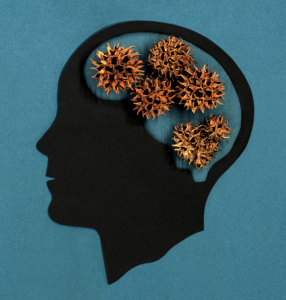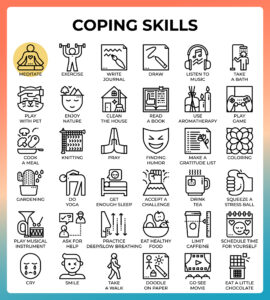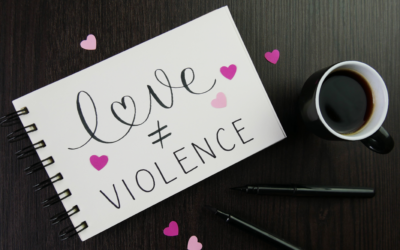Unmasking Borderline Personality Disorder: What it is and What it isn’t
Borderline Personality Disorder (BPD) is a complex mental health condition that can significantly impact a person’s emotions, thoughts, and behaviors. It is important to understand what BPD truly is and what it isn’t to provide accurate information and support for those affected by this disorder.
What Is Borderline Personality Disorder?

Borderline Personality Disorder, or BPD for short, is a condition characterized by intense and rapidly changing emotions that can lead to impulsive behavior. People with BPD often experience extreme fear of abandonment and uncertainty about their identity. These intense emotions can lead to impulsive decision-making, difficulties in relationships, and self-harm.
It’s like having your emotions turned up to the maximum all the time, making it challenging to think clearly and make decisions. This not only impacts the individual with BPD but also affects their family and friends.
BPD is not just about feeling sad or angry constantly; it’s about the overwhelming strength of these emotions, which can make everyday tasks, such as studying, working, or socializing extremely difficult. These feelings cannot simply be switched off; they require support and understanding to be managed.
Dealing with BPD can be incredibly challenging, and it’s important to understand that individuals with BPD are not purposely being difficult. They are coping with internal struggles and need support and care.
Common Myths About BPD Debunked
There are many misconceptions about Borderline Personality Disorder (BPD) that need to be cleared up. First, some people believe that those with BPD are just seeking attention or trying to manipulate others, which is not true. Individuals with BPD are dealing with significant emotional pain and are seeking support and coping mechanisms, not trying to deceive anyone.
Another common myth is that individuals with BPD cannot get better. This is absolutely false. With the right help, such as therapy and sometimes medication, people with BPD can lead happy and healthy lives. Though it’s challenging, improvement is entirely possible.
Some also mistakenly believe that BPD is not a legitimate medical condition, assuming it’s simply about being overly dramatic or sensitive. This is far from the truth. BPD is a recognized mental health disorder that can have a substantial impact on an individual’s life. It’s not a choice or something that can be easily overcome.
Lastly, there’s a misconception that BPD only affects women. While it may be more frequently diagnosed in women, men can also have BPD. It’s important for everyone, regardless of gender, to receive the support and treatment they need if they are dealing with BPD.
Understanding the truth about BPD can help diminish the stigma and provide valuable support to those striving to manage their condition.
Recognizing the Signs of BPD

Emotional Dysregulation
Borderline Personality Disorder (BPD) is a complex mental health condition that affects how people feel and interact with others. People with BPD can experience really intense and quick changes in their emotions, which can be confusing for them and the people around them. They may go from feeling really happy to very sad or angry in a short amount of time, making their emotions seem unpredictable.
Abandonment
Another important thing to know about BPD is that people with this condition often have a strong fear of being left alone. This fear can make them hold on to relationships even when they’re not going well because they’re scared of being abandoned. This fear can make it hard for them to make and keep friendships and other relationships.
Identity Difficulties
People with BPD may also have a hard time figuring out who they are and how they see themselves. They might feel really good about themselves one minute and then feel really bad the next. This back-and-forth feeling about themselves is a big part of having BPD.
Impulsivity
People with BPD can also act without thinking about the consequences. This can lead to doing things like spending too much money, using drugs or alcohol, or driving recklessly. These impulsive actions can cause problems in their lives.
Suicide Attempts or Self-Harm
During times when they’re feeling really upset, people with BPD might hurt themselves or have thoughts about hurting themselves. This behavior is a way for them to show how much emotional pain they’re in. It’s really important for people with BPD to get help from a doctor or mental health professional. They can get a full evaluation to see if they have BPD and then get the right kind of help to start feeling better.
Basic Coping Skills for Managing Emotional Dysregulation

Coping with the whirlwind of emotions that accompanies Borderline Personality Disorder (BPD) can be challenging, but there are some fundamental steps you can take to make it a bit easier. Consider these steps as tools you can use to manage your emotions effectively.
Mindfulness
One helpful tool is mindfulness. This involves paying attention to the present moment without passing judgment. For instance, if you’re feeling extremely upset, you can take a moment to acknowledge your emotions, observe your surroundings, or listen to the sounds around you. This practice can help you regain control and prevent being overwhelmed by your emotions.
Breathing
Another useful tool is deep breathing. When things become overwhelming, taking slow, deep breaths can help lower your heart rate and promote a sense of calm. Visualize breathing in relaxation and breathing out stress.
Relaxation
Engaging in relaxation techniques can also be beneficial. One approach to relaxing your body and mind is through progressive muscle relaxation, which involves tensing and then relaxing different muscle groups in your body, one at a time. It’s like giving your body a gentle cue to unwind.
Distraction
Having a list of activities that bring you joy can also make a significant difference. This could involve anything that brings you happiness, such as listening to your favorite music, drawing, or spending time outdoors. These activities can provide a reprieve from your emotions and infuse positivity into your day.
Support
Lastly, confiding in someone you trust can be incredibly powerful. Whether it’s a friend, family member, or therapist, sharing your experiences can help you feel supported and less isolated.
Finding Help and Support for BPD

Remember, it’s important to seek help if you or someone you know might have Borderline Personality Disorder. Talking to a doctor or a mental health professional, such as a therapist, can be very beneficial. Dialectical Behavior Therapy (DBT) is a type of therapy that can help you learn how to manage your emotions and cope with difficult situations without worsening them.
Joining a support group where people share their experiences and provide encouragement can make a significant difference. It’s reassuring to know that you’re not alone and that others can relate to what you’re going through.
Don’t underestimate the support that your family and friends can offer. Simply having someone there to listen can make a tough situation feel more manageable. Asking for help is a sign of strength, not weakness. Everyone needs assistance at some point, and finding the right support can greatly improve how you feel.










